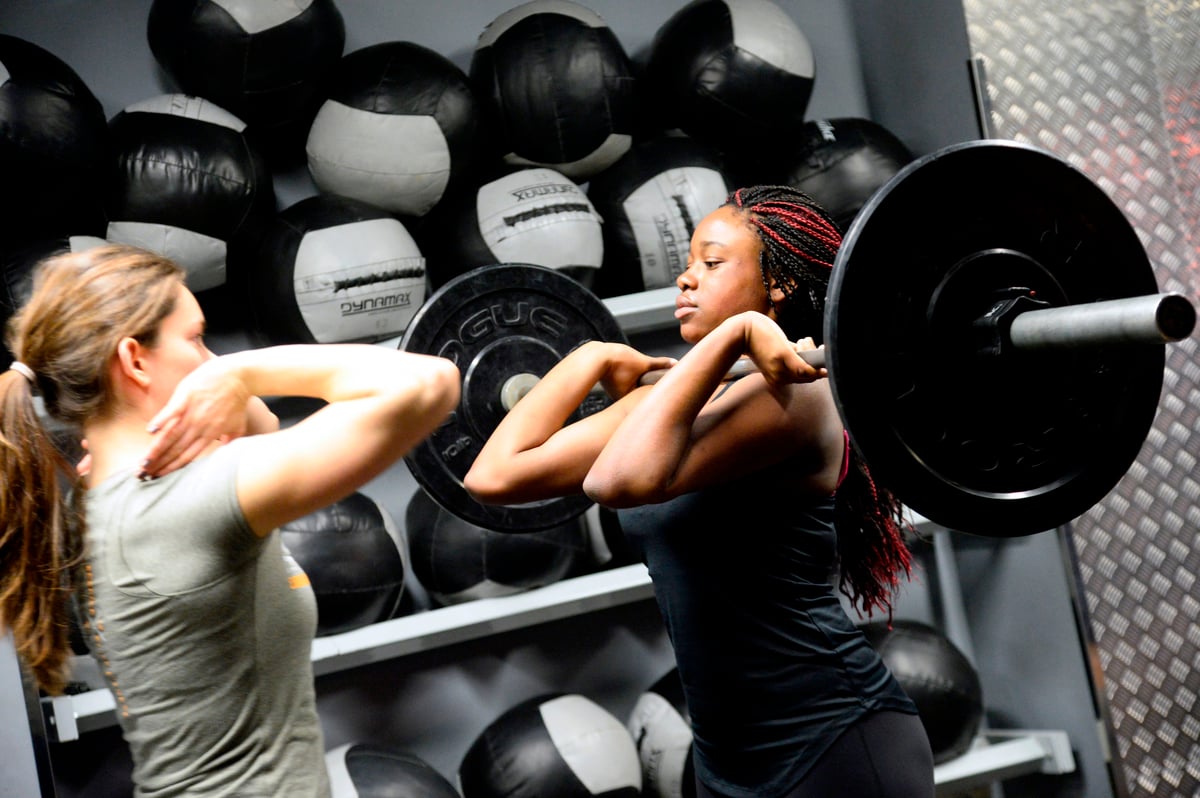Copyright scotsman

As winter fast approaches and people start penning down “get fit” as a resolution for the New Year, I felt it would be a fitting moment to reflect on my own fitness journey… The Covid pandemic and lockdown turned the world upside down, and the subsequent social isolation took its toll on the mental and physical health of so many of us. I was more inactive than ever and, overall, felt miserable and negative about life. But it was then that I reached a turning point, becoming determined to improve my situation. This led me to hours of research online, where I came across articles touting the beneficial impact of strength training on physique, mental health, and sleep, and how it can reduce the risk of major illness, and increase life expectancy. READ MORE: Scotland needs to start believing in 'miracle' cure for national obesity crisis So in the end, I impulsively bought a pair of dumbbells and started following a home workout routine. The results were almost immediate. Within weeks, my mood improved, I was already feeling stronger and fitter, and most of all, I was enjoying myself. But over time, I had maxed out my dumbbells and no longer found home workouts as challenging or fulfilling. As lockdown restrictions eased and gyms reopened, I took the leap to join one, with a nudge from a friend who became my gym buddy. I know that the gym isn’t for everyone, but exercise is, or at least it should be. An active lifestyle does wonders for our overall health and wellbeing, and this is all the more relevant given the current state of health in this country. Additionally, more people getting active and making healthy lifestyle choices reduces the strain on the NHS, especially as we get older. READ MORE: Overcoming water fears transforms health journey But unfortunately, even when people want to be more active, there are so many barriers. In this climate of flip-flopping fitness trends, wellness gimmicks and ever-changing beauty standards, I’ve had to navigate a lot of confusion on this journey, which, sadly, too many of us can relate to. As an eager newbie, I often sought fitness knowledge from social media, and I’m not alone in this, as growing numbers of people are turning to digital platforms for fitness advice. The online world, especially fitness content, is full of contradictory info and influencers, making the whole landscape overwhelming and leaving us at risk of misinformation. Social media algorithms push certain narratives, creating a confusing cycle between evidence and influence. Navigating this can lead to making mistakes, giving up, or, at worst, result in harmful practices and injuries. READ MORE: National charity launches new wellbeing and exercise podcast to help more Scottish communities get active for summer There’s also a significant level of toxic fitness culture masking shame as motivation, and fluctuating fads, especially those targeted at women. One day it’s a fixation with bulking and building an hourglass figure, and the next, your feed is flooded with #thinspo & SkinnyTok, reinforcing age-old fatphobia. Both obsessions represent narrow ideals of beauty and can be incredibly detrimental to our wellbeing and fitness goals. Fitness is for everyone, but it looks different for everybody, and that’s the universal truth: there is no one-size-fits-all, despite what the media wants us to believe. Then there’s the added issue of representation. I’d open my feed and not see any people who looked like me or resembled my background, which often made me doubt if this was a space I could fit in. Another major barrier to more people (women especially) accessing the gym is gymtimidation or gym-anxiety. One study showed that about nine out of ten women feel judged when working out, a problem which can be exacerbated by general uncertainty and unfamiliarity with the gym setting. The fact that women are often grossly outnumbered by men in these spaces doesn’t help, especially in the weights section, with one study stating the ratio of men to women, on average, is four to one. I felt this acutely at the gym, where it was particularly intimidating being a visibly Muslim Black woman. I found myself being hyper-vigilant as it was hard not to notice every stare and sideways glance my way when I was just trying to work out like everyone else. Every look had me questioning my place there. Despite these issues, social media can and has played a positive role in my fitness journey. Seeing the transformative stories, particularly those of fellow young women of colour, who changed their lives through fitness, inspired me to do the same. And the beneficial content I did consume taught me a lot of stuff I know now. Through social media, I was able to connect with other people from similar backgrounds to me who were all passionate about fitness. I even came across helpful tips to combat my gym-anxiety, like targeting off-peak hours to train or wearing noise-cancelling headphones to block out distractions. But more can be done to make the gym scene and overall fitness environment more attractive and welcoming to newcomers. For starters, gyms should implement measures to create safer and more comfortable experiences for gym-goers, such as training staff to combat harassment and intimidation, improving accessibility, and providing more women’s-only spaces. More diversity and regulation in the fitness industry are necessary, but in the meantime, we, especially young people, should be encouraged and taught to curate our social media algorithms as much as possible, make the most of existing safety features, and be supported in questioning attempts to spread health disinformation. Ultimately, reducing barriers and increasing accessibility to fitness can make it easier for individuals to maintain good health and have a positive impact on society as a whole. Muminah Koleoso is a Nigerian-British Muslim and award-winning writer, content creator, and podcaster who uses storytelling to amplify the voices of Black and Muslim women



